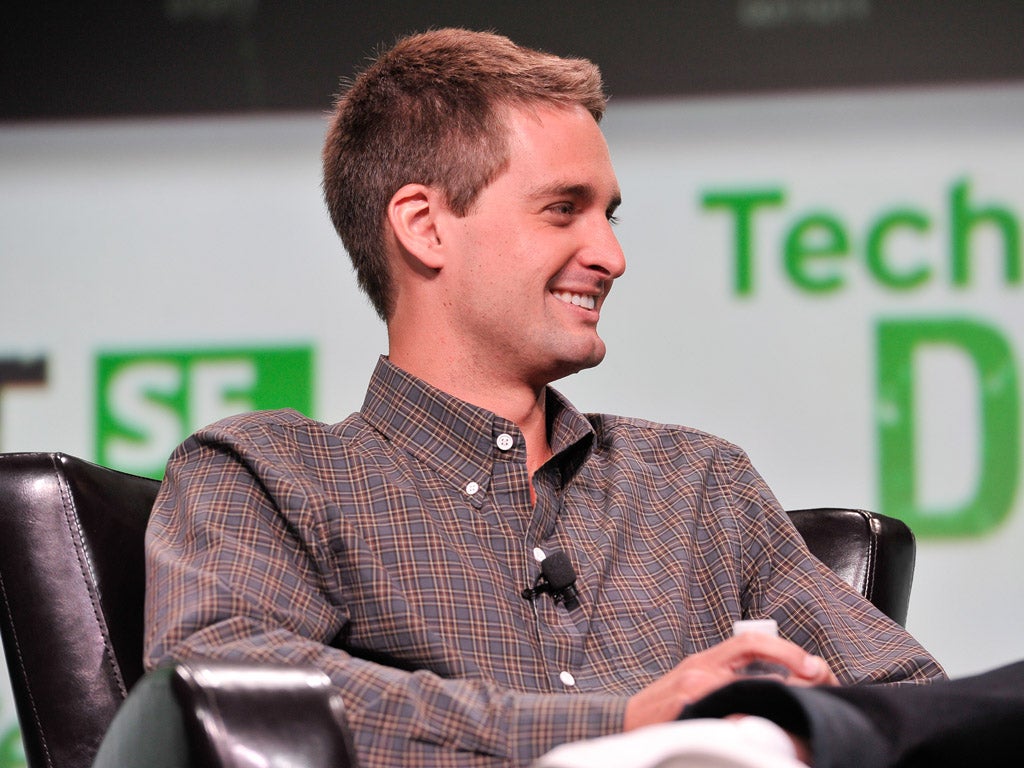So why did Snapchat reject Facebook's huge offer?
Ephemeral media removes the burden of a lasting digital archive (without ads) - which could potentially conflict with Facebook's format

Your support helps us to tell the story
From reproductive rights to climate change to Big Tech, The Independent is on the ground when the story is developing. Whether it's investigating the financials of Elon Musk's pro-Trump PAC or producing our latest documentary, 'The A Word', which shines a light on the American women fighting for reproductive rights, we know how important it is to parse out the facts from the messaging.
At such a critical moment in US history, we need reporters on the ground. Your donation allows us to keep sending journalists to speak to both sides of the story.
The Independent is trusted by Americans across the entire political spectrum. And unlike many other quality news outlets, we choose not to lock Americans out of our reporting and analysis with paywalls. We believe quality journalism should be available to everyone, paid for by those who can afford it.
Your support makes all the difference.I’ll start this piece with the bit of word-play I might have ended it on, it goes like this: Snapchat – the “ephemeral media” photo sharing app that deletes its own messages after they’re sent – isn’t going away any time soon.
This sort of quasi-punnery has ended many op-ed style pieces on Silicon Valley’s latest darling (I’m guilty of it myself) but the reason it gets trotted out so much is because it’s true. The two-year-old company recently rejected an acquisition offer of $3bn from Facebook, and although you can argue that this wasn’t the wisest of decisions (mainly by repeating the words ‘Three. Billion. Dollars’) the core concept behind Snapchat, the idea of “ephemeral media”, could prove to be immensely important.
As the vast majority of Snapchat’s users are under 25 (a demographic that is, not coincidentally, beloved of advertisers) we should start with a quick run-down of how the app works. You download it to your smartphone, add your friends, then send them pictures or videos. The kicker is this: you also have to set a timer on each message for between one and ten seconds. After this time is up the message it is automatically deleted from the recipient’s phone. Of course, there are hacks to get around this (including simply taking a screenshot – though the sender is informed of this) but that’s not a massive issue unless you’re planning on using the app for sharing racier images.
This last point has been one of the more foolish ways of evaluating Snapchat’s success (‘look at those teens and their ke-razy hormones’) and it’s an argument that completely ignores the fundamental appeal of having photos that disappear: there’s just less pressure.
Teens - and I’m sorry to use that moniker as if it represents some homogenous mass – generally love sharing information online (it’s pretty much what powers the internet) but studies have shown that they’re far more attuned to the nuances of self-presentation than we sometimes think. They’re aware of being judged online and they worry about how they appear; both to their peers and to the adult world of parents, schools, and potential employers.
By offering a form of communication that is private and erases its own tracks, Snapchat removes the burden of a lasting digital archive - that ugly tail that everybody drags behind them throughout their online life. And if the app does happen to provide teenagers with a safer option to explore their racier impulses then what of it? If history teaches us anything it’s that it’s incredibly difficult to stop young people trying to get off with one another. Self-destructing messages make for less anxious teenagers, less conspicuous narcissism, and less young lives ruined by private snaps going public.
However, whilst all this suggests that the wider trend for ephemeral media is beneficial, it doesn’t answer the question of whether or not it was wise of Snapchat to reject Facebook’s offer. If self-destructing messages are such a good thing then what’s wrong with giving them the financial clout of Mark Zuckerberg’s backing?
The answer lies in how the companies would make their money. Like Snapchat, Facebook began by attracting vast amounts of users before monetizing this resource by selling them ads, and - more controversially - mining their personal information in order to sell them better ads. Whether or not this is a good thing or not is debatable, but it means that it’s always in Facebook’s interests to get users to give up more information about themselves. This can become a problem.
In contrast, Snapchat reportedly plans to use a different revenue model: getting users to pay for added services instead of selling them adverts. This would mean that if Snapchat ever developed into a more fully-fledged social network (and recent additions suggest that they could go this way) then they would be far less exposed to the sort of worrying privacy issues that dog Facebook. Snapchat wouldn’t be forced to continually tweak privacy settings to reveal more about their users because they wouldn’t need to.
As apps go, Snapchat might seem like nothing more than a silly idea that has attracted silly money, but if it succeeds then it could be a significant development – both for the internet and for society as a whole.
Join our commenting forum
Join thought-provoking conversations, follow other Independent readers and see their replies
Comments